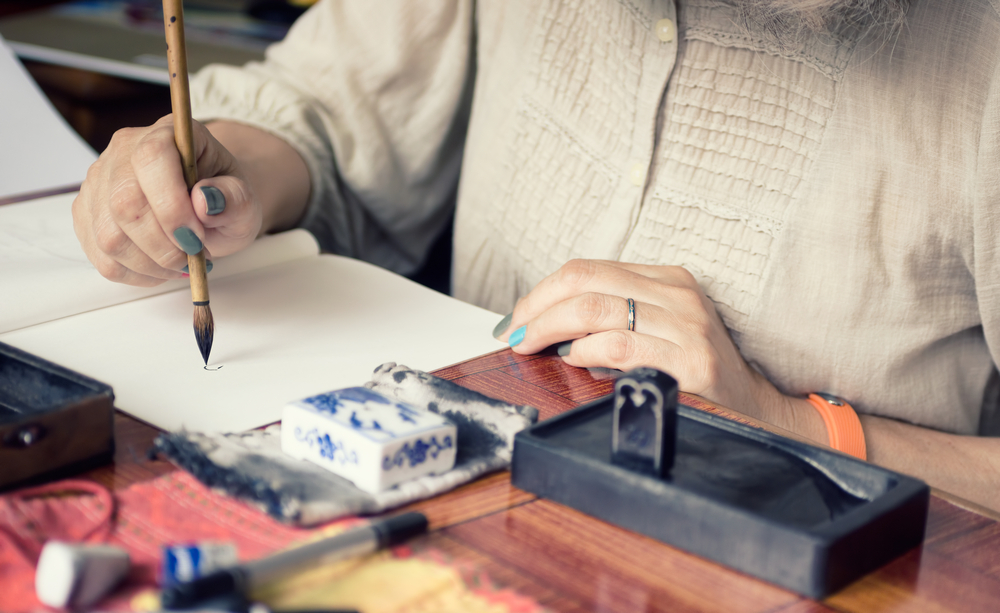Anonymous No More: A Closer Look at an Intriguing Arts Funder
/photo: sc0rpi0nce/shutterstock
Anonymous Was a Woman (AWAW) provides unrestricted grants of $25,000 to 10 female artists over age 40 annually in an effort to support women at a critical juncture in their careers. It has awarded over $5 million since 1996, and its founder and funder have always been anonymous—until recently.
Last year, 77-year-old artist Susan Unterberg revealed that she’s the patron behind this grantmaking outfit, though the nominators and final award panel members will remain shrouded in mystery. Last month, AWAW announced its latest round of grants to women working in diverse mediums including film, installation, painting, performance and photography. Painter Dotty Attie at 80 is the oldest recipient, and Kate Gilmore, an installation, performance and video artist, is the youngest at 42.
These awards strive to counteract the continuing lack of representation women receive in the art world, a dilemma that has improved, but persists—of 590 major exhibitions in the U.S. from 2007 to 2013, 27 percent were devoted to women artists.
Along with AWAW, we see a growing number of philanthropies looking out for and championing female artists, including the Ms. Foundation for Women, the Seattle Trust, the Barbara Lee Foundation, the Roy Lichtenstein Foundation, the Swartz Foundation, the Joan Mitchell Foundation, the Bernstein Family Foundation, and the late Madeleine Rast, among many others. While supporting creative women constitutes a grantmaking niche, its focus on equity aligns well with the ongoing social justice trend in arts funding.
A more hopeful statistic on women in the arts is that ArtReview’s 2018 Power 100 list, which is, admittedly, just one limited lens through which to view the diverse contemporary art world, featured 48 women in 2018. This is up from 38 the year before, and up significantly from 17 in 2002. Also notable in 2018, #MeToo, defined as the “viral international movement denouncing sexual harassment and abuse of women,” received the No. 3 spot.
The #MeToo movement, along with proposed budget cuts to the arts, was an inspiration to Unterberg in coming forward last year. She told ArtNet, “It seemed to be a great time for women to speak up, and I felt I could be the most forceful advocate using my own voice.” She added, “It’s important to emphasize the value of the arts, which is currently not being recognized by the current administration.” This statement highlights another principal reason she began AWAW: to fill a gap in public funding when the National Endowment for the Arts (NEA) stopped supporting individual artists in the 1990s. Now, a little more than two decades later, the entire NEA is in danger of being eliminated by President Trump.
AWAW stands out because it is truly a no-strings-attached grant; recipients are only asked to write a letter of any length at the end of their award year. They can use the money to support their art practice in whatever way suits their unique circumstances, Unterberg told RobbReport:
It can be one line saying this grant has been so wonderful, or it can be however long they want it and how they used the grant or whatever, but if they use it for child care, that’s OK. If they use it for maybe giving them a year without having to teach, whatever. It is up to them to decide how they use it.
The AWAW grant is not need-based, is awarded by nomination only, and is administered by Philanthropy Advisors. A secret group of female art historians, curators, writers and previous winners serve as nominators each year, with a panel of five making the final calls. While Unterberg has participated in the panel in the past, she will abstain now that her identity has been revealed so as not to hold a weighted influence over the decisions or sway other judges. Award winners have gone on to exhibit at top institutions and venues like the Whitney, MoMA, Guggenheim and Venice Biennale, carried out numerous public art projects, performances and installations, and received significant critical acclaim. Joan Jonas, Betye Saar and Mickalene Thomas are among the past grantees, along with 2017 Michelle Obama portrait artist Amy Sherald.
The money for AWAW comes from an inheritance Unterberg received from her father, oilman and philanthropist Nathan Appleman, who died in 1992. She hopes one of her two daughters will continue the work after her.
AWAW states the name for the grant program refers to a line in Virginia Woolf’s, “A Room of One’s Own.” The relevant quote is, “I would venture to guess that Anon, who wrote so many poems without signing them, was often a woman,” which is very often paraphrased or misquoted as, “For most of history, Anonymous was a woman.” Woolf writes that anonymity would have been a “refuge” for creative women in the past, whose work would have been unfairly judged on the basis of their gender.
While their reasons for speaking out vary, like the many women who have joined the #MeToo movement, Unterberg decided to reveal herself and enter the public gaze. Past AWAW award winners reached out to her with thanks after her “coming out.” She hopes the revelation of her identity will inspire other philanthropists, particularly women, to fund female artists and perhaps contribute to her organization as well, which she describes as “lean.”
AWAW has helped her to realize how important it is for women to support and affirm each other. “It was not only the money, but also the support of other women backing them that gave [the winning artists] the push they needed to continue,” she said. “Women need the support of their own.”







































